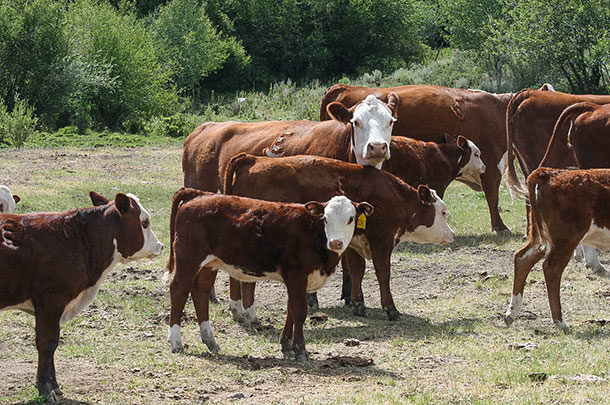Aaron Berger, beef extension specialist with the University of Nebraska, told producers that those eyeing a future exit from the beef industry and those working to find their way in could benefit from one another through cow leasing programs.
“If you’re going to acquire land, equipment, cattle – and have a living wage – we’re talking a lot of investment and money involved,” Berger said during a presentation at the Range Beef Cow Symposium in November in Mitchell, Nebraska. “And other people have built in a lifetime investment and don't have the labor but may not want to transition out just yet.
“Or one owns the land, and the other takes ownership of the cow herd. A transition on that herd can also help taxwise, rather than liquidation.”
Berger said there are two cow leasing arrangements that can work for producers on either side of the bargaining table. Each one has its own pros and cons for both sides, depending on the situation that faces an owner or a lessor.
Cash leasing
The simplest form of lease is a cash lease. In this arrangement, the individual who owns cows delivers cows, bred cows or bulls to an operator in exchange for a set cash amount. “Someone delivers 100 cows to me; I have to pay a cash lease per bred cow. It could be full payment now, or half now, half later.”
For owners, this lease provides less risk against changing prices or marketing hurdles when prices fall. Disadvantages can be less income potential for rising prices, or they may not have access to replacement females.
The operator, on the other hand, pays the owner for cows and manages them as they see fit and keeps the resulting calf. The upfront challenge can be coming up with cash for the leased cow. “You’ve accepted all the cash risk. Tough situations or market conditions make it more challenging for you.”
But the operator’s payoff comes through retaining calves in the calf crop.
Cow-calf share leases
A more mixed arrangement comes from cow-calf shares. In this deal, a cow owner gets a share of the calf crop and can maintain a role in management of the herd while retaining or selling at weaning. Disadvantages for the owner come again from the production and price risk; also, there’s the uncertainty of how the relationship with the operator will proceed.
For an operator in a cow-calf share lease, cash isn’t needed to pay for the lease of cows; the owner and operator both share in production costs and price risks. This can also be good for ranchers starting out in the business who may need some tutoring as they break into the business.
Common questions
Berger said most producers entering such deals want to know what’s fair. How you determine that can be aided by University of Nebraska’s Cow Q Lator.
“This share lease tool allows you to go in and say what they’re contributing to the share of weaned calves,” he said, saying it includes value of labor, depreciation and insurance, while calculating share and cash value. “It helps both parties to see what they’re getting in.”
Other factors to consider for the cow and share leases:
- Integrity – Trust is paramount for leasing agreements. If you don’t trust your owner or operator, the agreement won’t work.
- Win-win is needed and has to work long term. Both need to find a way this is agreeable to you both.
- Lender involvement – Make sure both parties know what’s taking place with the cows. Clarify who owns, who gets the calves and how it will work.
- Cow-calf care – cow body condition score expectations the cows should have before and after calving, selecting a veterinarian, costs of death loss and sickness
- Breeding decision – When will bulls go out? What’s an acceptable breed up? 92% or 88%?
- Culling decisions – Who decides to send the cow down the road? Who gets to handle it?
- Replacements – How will they be brought in? Replacement, older, short term, it all affects labor.
- If you’re in a share agreement, how will calves be divided? Who physically sorts them?
- Whose brand is on the calves? Owner or operator?
- Hauling and marketing – Who pays to get them there?
- Expected results – Find the projections on best- and/or worst-case scenarios.
- Exit plan – If situation isn’t going to work, how do we agree and notify another to end?
- Put the agreement in writing; integrity is paramount. Process provides clarity on what is said and heard.
- Having a third-party mediator – Both identify someone you both trust, can sit down with and get it to an agreeable decision.
For replacements, Berger suggested have a separate agreement in place that differentiates points from the cow-calf share agreement. Costs and expectations need to be separated. If you don’t, carefully spell out how those two are going to interact with one another. ![]()
PHOTO: Several decisions must mutually be met on cow lease agreements, including how the condition of cows should be maintained. Photo by Paul Marchant.

-
David Cooper
- Managing Editor
- Progressive Cattle
- Email David Cooper









